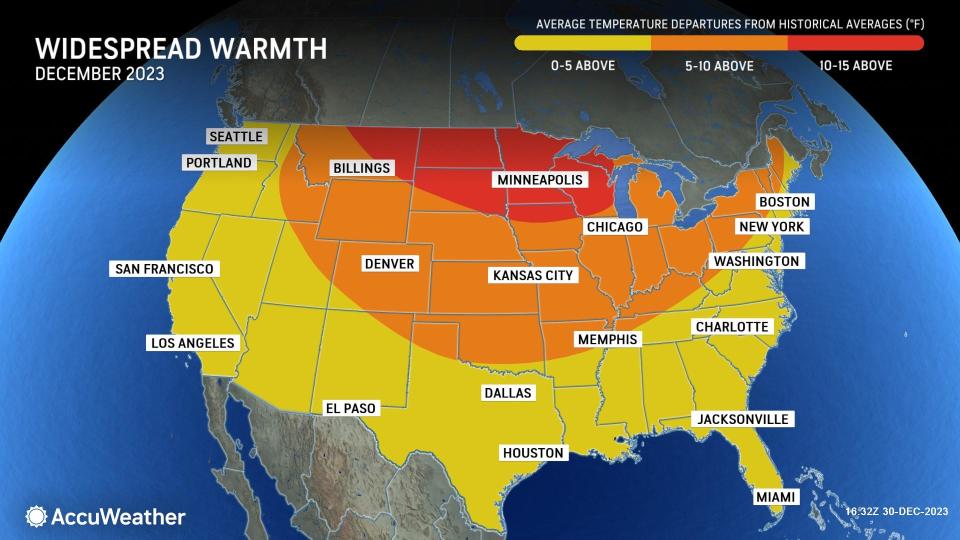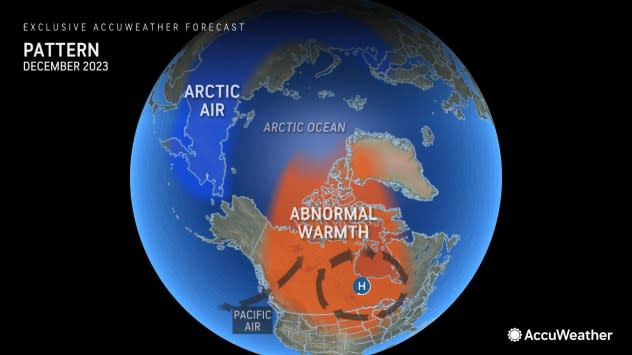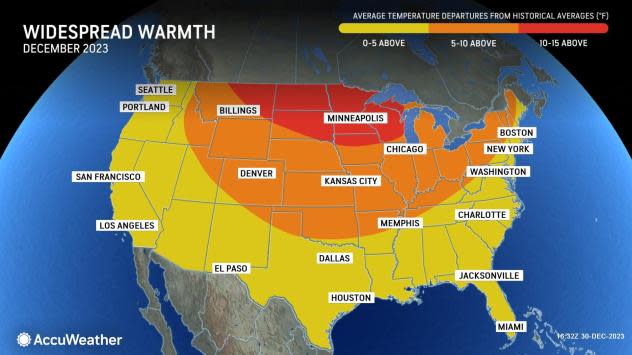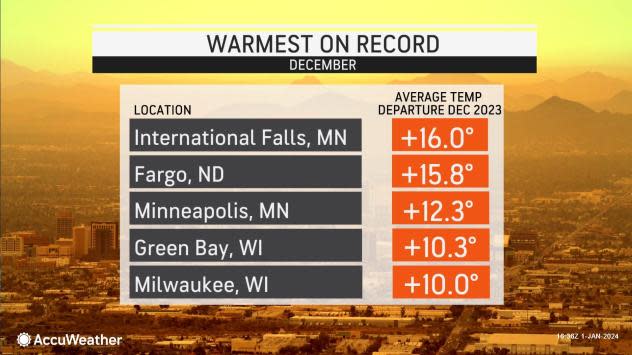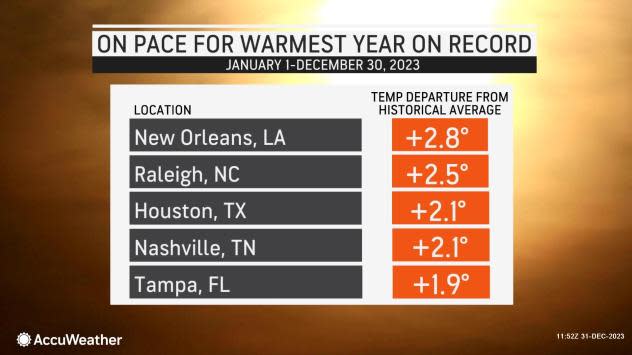December 2023: US warmth is one for the record books
As the final statistics for December 2023 roll in across the United States, one thing has become clear -- the month will go down as one of the warmest Decembers ever for a number of locations over the north-central region, AccuWeather meteorologists say.
Those who gambled on procrastinating on breaking out the heavy winter gear until after the holidays have seen that risk pay off this month. The warmth has helped with household budgets by lowering heating bills at a time when holiday spending may have gotten out of hand due to high grocery prices.
Nearly every reporting site over the lower 48 states experienced temperatures above the historical average for the month, which is quite rare. Typically, there are warm pockets and cool pockets due to fluctuations in the jet stream.
"Arctic air has been on the move this month, but mainly on the other side of the globe, in Siberia," AccuWeather Senior Meteorologist Brett Anderson said.
 |
A temperature departure of a degree or two above or below average for an entire month is not unusual. Nor is a temperature departure of 5-10 degrees for a day or two. It becomes more unusual to the extreme as these approximate 30-day averages increase beyond a couple of degrees.
As a testament to the lack of Arctic air in December, in the perennial icebox of the lower 48 states, International Falls, Minnesota, has experienced an average temperature of 27.7 degrees Fahrenheit as of Dec. 30, which is a whopping 16.0 degrees above the historical average for December, AccuWeather Senior Meteorologist Tom Kines said.
"With that [temperature] in mind, conditions in International Falls have been more typical of Chicago, which is more than 500 miles to the south," Kines stated.
Many cities over the North Central states have double-digit warmth in terms of temperature departures this December. The anomaly is 12.3 degrees in Minneapolis, 11.6 in Great Falls, Montana, and a staggering 15.8 degrees in Fargo, North Dakota.
 |
But, even farther to the south, east and west, this month has been quite warm.
Temperatures have been 8.5 to 9.0 degrees above the historical average in Chicago, St. Louis and Pittsburgh and at least 5 degrees above in Oklahoma City, Denver and Caribou, Maine.
Many metro areas along the Interstate 95 corridor of the East Coast, including New York City, Boston and Washington, D.C., and the I-5 corridor of the West Coast, such as Los Angeles and San Francisco have been 3 to 6 degrees above the historical average this December.
In a number of cases, the extreme temperature departures represent the warmest December on record, with some measurements dating back more than 100 years. Fargo, International Falls, Minneapolis, Milwaukee and Las Vegas are among the cities on pace to have their warmest December ever.
 |
In Minneapolis, the top spot is held by Dec. 1877 with 33.8 degrees. As of Dec. 31, the average temperature for this December will go in the books as 34.3 F, or 0.5 of a degree higher than the record set 146 years ago.
In Fargo, December 2023 has been averaging 5.6 degrees above the record of 25.9 degrees set in 1959. Nighttime lows are typically in the mid-single-digits F during the second half of December. Instead, lows most nights have been in the 20s and 30s.
While the unusually mild conditions and lack of snow are far from ideal for winter sports enthusiasts, the warmer weather has provided opportunities such as outdoor projects, last-minute home and yard maintenance and the ability to enjoy the outdoors without experiencing harsh cold.
Not only has December been warm for much of the nation, but so has the year. A number of cities in the South are likely to experience their warmest year on record, including Nashville, Houston and New Orleans. Long-lasting drought conditions have played a key role in the heat.
 |
In parts of the East, December was so soggy, it has challenged for the wettest ever in some locations.
Just enough air has made some intrusions into Alaska to help boost snowfall in part of the Frontier State. With a temperature departure of 2.6 degrees below the historical average, an active storm track has produced 39 inches of snow this December in Anchorage. The historical average snowfall for all of December is 18.2 inches. Close to 80 inches of snow has fallen on the city since the start of October.
"There are some signs that Arctic air will push southward across central Canada and may empty periodically into parts of the central and eastern U.S. during January," AccuWeather Senior Long-Range Meteorologist Joe Lundberg said, adding, "Consistent or long-lasting Arctic cold does not appear likely for the first part of the month, however. That could change during mid-to-late January."
Want next-level safety, ad-free? Unlock advanced, hyperlocal severe weather alerts when you subscribe to Premium+ on the AccuWeather app. AccuWeather Alerts™ are prompted by our expert meteorologists who monitor and analyze dangerous weather risks 24/7 to keep you and your family safer.

